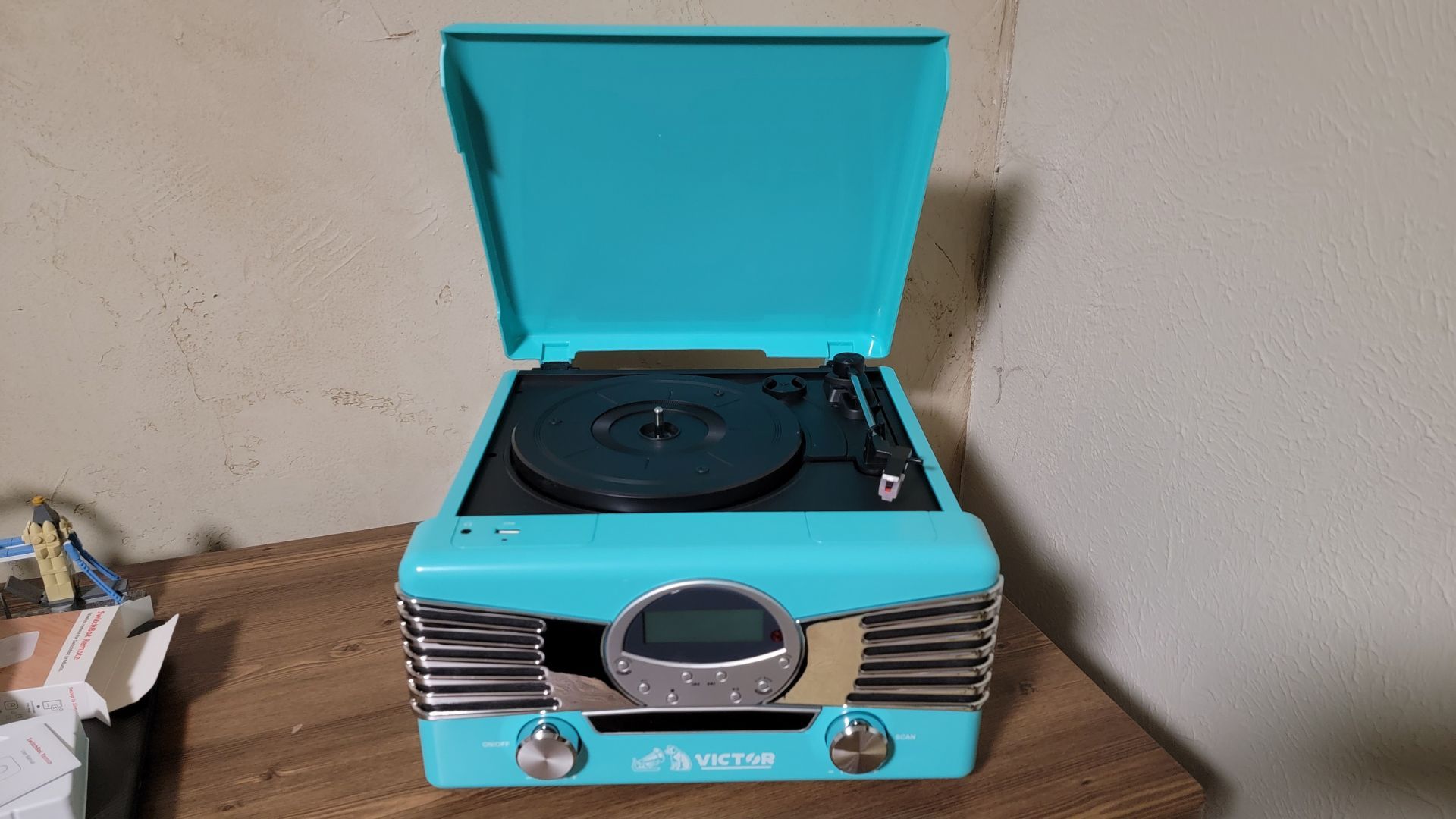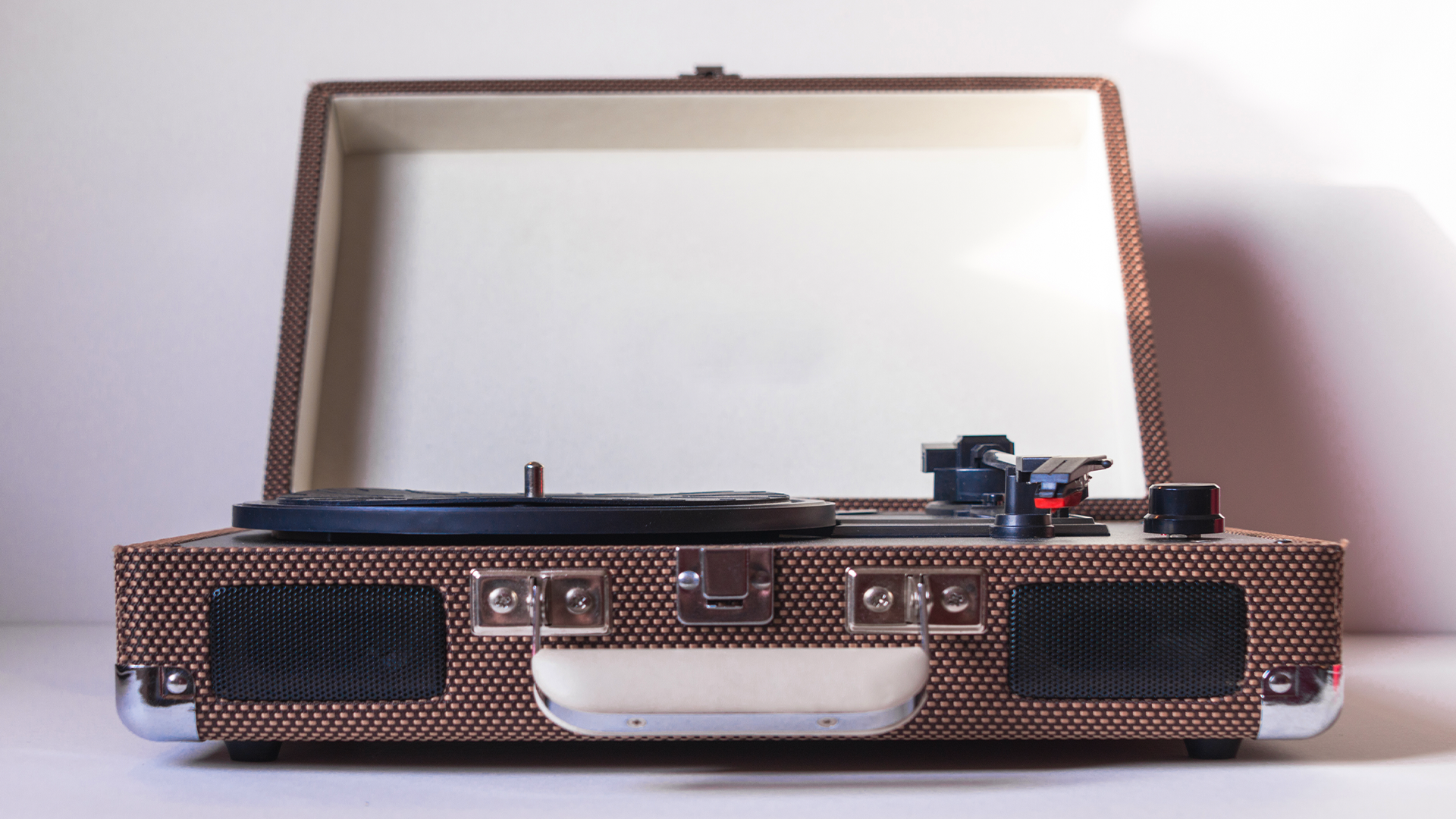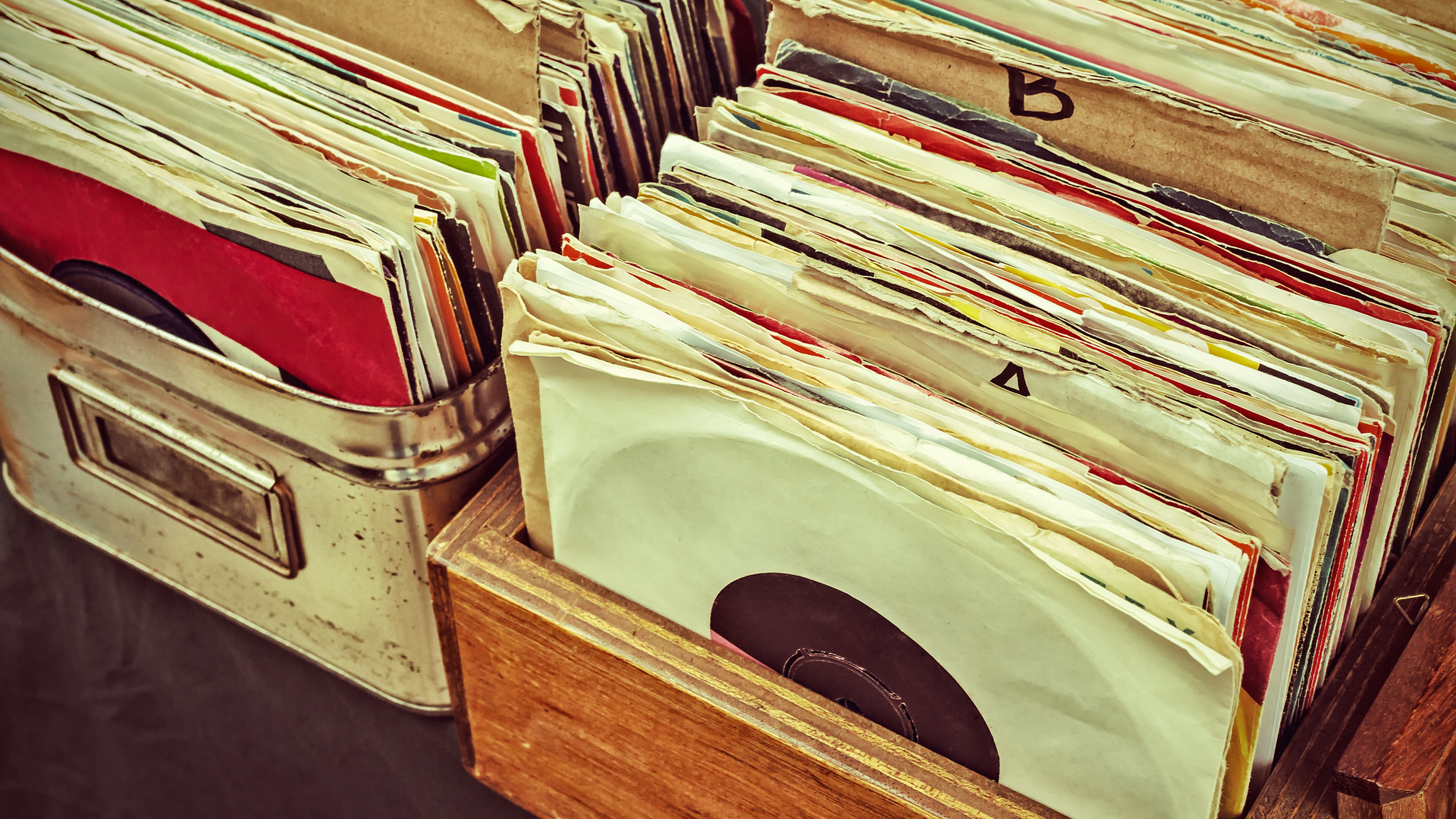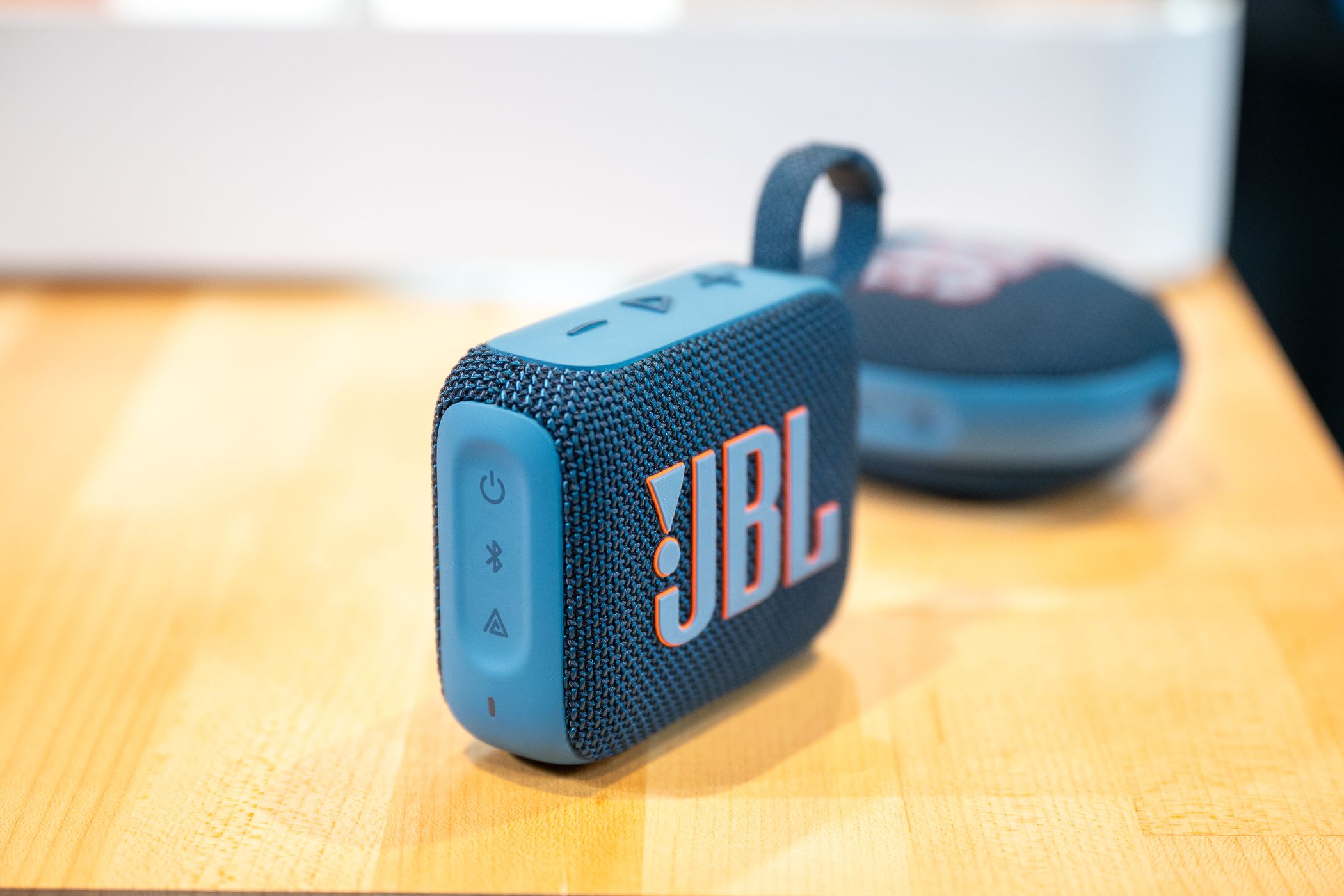
Why You Should Avoid the Suitcase Phonograph - Best Options Explained

Why You Should Avoid the Suitcase Phonograph - Best Options Explained
Key Takeaways
- Portable record players have poor sound quality due to small, cheap speakers with distortion issues.
- Upgrading or adjusting components such as speakers or cartridges in portable players is nearly impossible.
- Portable record players wear out styluses quickly, potentially damaging records, and have a short lifespan due to weak design.
You’ve strolled through the park and encountered a felt-brimmed figure listening to The Beatles’ Yesterday and Today through a portable suitcase record player. Maybe you rolled your eyes or thought, “Wow, how fascinating!” and plan to purchase one. Here’s a helpful tip: Don’t.
My Concerns With Portable Suitcase Record Players
I won’t pretend that we can’t at the least surmise portable record players have mediocre sound quality and that owning one is somewhat impractical. Vinyl can be inherently impractical and expensive, like a horse or a boat; that’s not my beef. However, I’ve watched people butt heads with these machines too many times, and they have much deeper, subtler issues than poor sound alone.
As such, I feel it’s my duty to explain why I’d never buy one for myself and why you should be very, very cautious before spending your money on one too.
It’s Like Listening Through a Tin Can
Record players are known for their warm analog sound , even with that scratchy, far-off effect. The sound is special given it’s the only genuine lossless format, meaning you get a natural, lifelike sound.
However, vinyl audio, although nice, still depends on the speakers you listen through, and the portable options almost always feature tiny, cheap speakers that demolish any hope of getting a reasonable sound. Every time I’ve listened to a portable record player, I’ve found myself wincing at the level of distortion and electromagnetic feedback. So, yes, you get a sliver of that vintage sound, but the speakers are usually very quiet, given they have astonishingly weak drivers and poor frequency response.
Good Luck Upgrading or Adjusting Any Components
Typically, with record players, if you aren’t happy with the sound or system configuration, you have the ability to make modifications. With portable players, you pretty much forfeit these rights.
You’re stuck with the factory speakers unless you conduct a very risky operation that requires taking apart the entire case and then removing and soldering in new speakers. I would not recommend this!

Andrew Heffernan / Shutterstock.com
Other core parts, like cartridges and needles, are mostly unalterable. Traditional record players, especially older models, are usually very forgiving and allow users to swap or adjust parts. Portable players aren’t designed for this, meaning you’re stuck with these cheapskate, mass-manufactured parts.
I remember finding out that a lot of these players don’t allow you to swap out the cartridge or allow you to adjust the headshell screws if it’s at the wrong angle, and it ruined my afternoon.
They’ll Eat Your Records
Portable record players have styluses with dangerously low lifespans. Given this, it doesn’t take long to wear out and make deep grooves in your records. With any record player, you ought to replace the stylus at least every 1,000 hours, but with portable options, it seems like you need to replace them in a fraction of that time, and like I said earlier, many don’t even let you.
I had one friend lose their not-so-cheap Hank Williams Sr. Sing Me a Blue Song record to groove wear, even though they claimed not to have used their record player for any more than 100 hours. Likely, what happened was that the stylus got filthy from being outside, which is always a risk, and something you need to remember when listening to one of these players.

Martin Bergsma/Shutterstock.com
For the sake of fairness, there are additional risks from taking your player outside. I can’t blame the devices themselves for this, but you’re asking to burn through your records at a greater pace if you use one of these players.
It’ll Fall Apart Before You Know It
Another obvious point, but I was genuinely surprised at how cheap the parts are, and how fast they deteriorate. I know a couple of folks who didn’t even have a portable record player for over 6 months before it developed a serious humming, buzzing, and speed inconsistency.
I find that portable record players feature much weaker designs because they sacrifice durability for style. They’re also designed for travel, meaning the parts are often lightweight plastic (sometimes aluminum, if you’re lucky), and prone to breaking.
Poor Battery Life
I’ve seen some portable record player models with rechargeable batteries that support up to 12 hours of continuous playback, but from what I’ve seen, that’s the exception. Many don’t even have batteries, meaning you’ll have to use an AC adapter with an outlet. Then, those that do have batteries typically offer 3-4 hours of playback, which means if you plan on using them all day for outdoor activity, you’ll need to limit how much you listen.
Skip the Suitcase, Here’s What to Go for Instead
If you really feel the urge to get a portable record player I recommend considering higher-end options, as they are made with better components, some allow you to connect to external speakers and are less likely to destroy your vinyl collection. However, when it comes to creating a great portable listening environment, even the pricier options have serious flaws.

Justin Duino / How-To Geek
When it comes to portable listening options, I almost always advocate going with modern solutions, like a smart speaker. Even small, affordable speakers, like the Bose Soundlink Mini II or JBL Go 4 are excellent, compact speakers that are affordable and deliver rich sound, have a long battery life, last for years, and are much better at standing up to weather and dust.
I understand the attraction to vinyl, but for now, keep it stationary.
Also read:
- [SOLVED] No Signal on Windows 11 Wi-Fi Adapter
- [Updated] In 2024, Economical Drones Reviewed Best Under a Hundred Bucks
- Banish Blur: Effective Strategies for Screen Stability
- Core I9-11900K Achieves Historic Milestone: Shatters Expectations at 7.abbbb GHz
- CXMT, Chinese DRAM Producer, Confirms Adherence to US Export Regulations for 18.5Nm Chip Production: Debunking Previous Allegations of Non-Compliance at 17Nm
- DDR5-7200 Corsair Dominator Titanium XL - Premium 2X24GB Memory Kit Assessment & Exceeding Specs!
- Dive Into Computing with Tom's Hardware Experts: Your Ultimate Resource for Gadget Analysis
- Exploring Technology with Tom: Your Trusted Source for Hardware Insights and Reviews
- Hassle-Free Ways to Remove FRP Lock on Samsung Galaxy A25 5Gwith/without a PC
- How to Burn Photos to DVD with Transitions and Music
- In 2024, 4 Methods to Turn off Life 360 On Xiaomi 14 Ultra without Anyone Knowing | Dr.fone
- In 2024, Does Poco M6 Pro 5G Have Find My Friends? | Dr.fone
- In 2024, iSpoofer is not working On Vivo X90S? Fixed | Dr.fone
- In 2024, The FPS Conundrum Deciding Between Standard & Higher Video Speeds
- Maximizing Raspberry Pi 5'S Potential with the Pi Ice Tower Plus: An In-Depth Review on Rapid Heat Dissipation Performance
- Pi Technology Set to Launch Public Offering in London Market
- Review of Rodecaster Duo: The Ultimate Toolkit for Streamers
- Solve the Problem: Why Isn't Diablo II Resurrected Starting Correctly?
- The Embedded Message FUTURE CARE Should Be Spread Across Different Sentences Throughout the Monologue, Not All in One Go
- Title: Why You Should Avoid the Suitcase Phonograph - Best Options Explained
- Author: Joseph
- Created at : 2024-10-16 12:28:32
- Updated at : 2024-10-18 19:07:47
- Link: https://hardware-help.techidaily.com/why-you-should-avoid-the-suitcase-phonograph-best-options-explained/
- License: This work is licensed under CC BY-NC-SA 4.0.